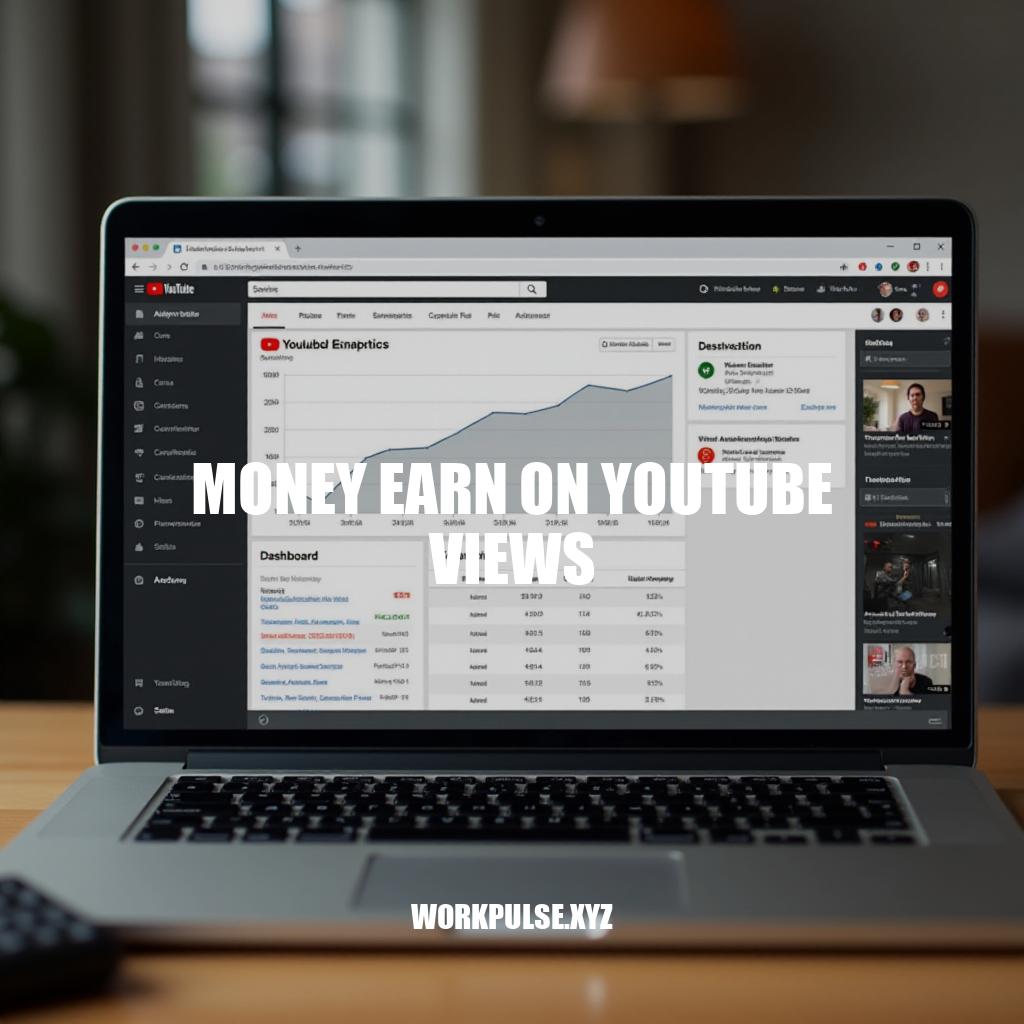
In the dynamic landscape of the digital age, YouTube has emerged as a prominent platform where individuals can transform their creativity into a lucrative career. Earning money on YouTube views has become an appealing prospect, thanks to the platform’s immense reach and diverse audience base. With millions of users engaging with content daily, creators have the potential to generate substantial income through advertisements, sponsorships, and direct viewer support.
Leveraging YouTube’s monetization policies, creators can earn revenue by accumulating views on their videos.
This process not only highlights the potential for financial gain but also underscores the importance of compelling and engaging content. As the demand for video content continues to grow, the relevance of YouTube as a source of income becomes increasingly significant, offering numerous opportunities for aspiring and established creators alike.
Understanding YouTube Monetization
YouTube monetization works through the YouTube Partner Program (YPP). To be eligible, a channel must have at least 1,000 subscribers and 4,000 watch hours over the past 12 months, or 10 million Shorts views in the last 90 days. The channel must also comply with YouTube’s monetization policies, have an AdSense account linked, and reside in a country where YPP is available.
Once eligible, creators can earn money through various methods:
-
Advertising Revenue: Earnings from ads displayed on videos and Shorts.
-
YouTube Premium Revenue: Payments for subscribers who watch ads-free content.
-
Memberships: Monthly fees from fans who want exclusive content.
-
Super Chat and Super Stickers: Revenue from fans tipping during live chats.
-
Merch Shelf: Selling merchandise directly through YouTube.
-
Affiliate Marketing: Earnings from promoting products and earning commissions.
-
Crowdfunding: Funds from fans supporting specific projects.
-
Digital Products: Selling courses, e-books, or other digital goods.
-
Content Licensing: Licensing videos to media companies.
-
Fan Funding: Direct support from fans through features like Super Chat.
These methods provide multiple revenue streams for creators, helping them monetize their content effectively.
Factors Affecting Earnings Per View
Audience demographics play a crucial role in determining YouTube earnings. Advertisers are willing to pay more to reach specific demographics, such as age groups, gender, and location. For instance, audiences in wealthier countries or those within a desirable age range for certain products can drive higher ad revenues.
Ad formats also significantly impact earnings.
Different ad formats, such as display ads, overlay ads, skippable and non-skippable video ads, and sponsored cards, have varying CPM (Cost Per Mille) rates. Skippable ads generally have lower CPMs compared to non-skippable ads, but they can still generate substantial revenue if viewers watch the entire ad.
Engagement is another critical factor. Higher engagement rates, including likes, comments, shares, and watch time, can lead to increased ad revenues.
YouTube’s algorithm favors content with higher engagement, which can result in more ad placements and higher CPM rates. Additionally, engaged audiences are more likely to click on ads, leading to higher CPC (Cost Per Click) earnings.
Other factors include the niche of the content, the seasonality of ad rates, competition for ad spots, and the use of SEO to attract more viewers. Channels in high-demand niches or with optimized content for search engines can attract more advertisers and higher ad rates.
By understanding and optimizing these factors, YouTube creators can maximize their earnings potential.
Strategies to Increase YouTube Views
Content quality is where it all starts—if your videos aren’t engaging or valuable, viewers won’t stick around. Think about your niche, and be consistent with your style and schedule.
SEO is your next best friend. Use keywords that align with what people are searching for.
Your title, description, and tags should all be optimized. Thumbnails are crucial too—they need to be eye-catching and give a good idea of what the video is about without being clickbait.
Audience engagement can’t be ignored. Reply to comments, ask for feedback, and encourage viewers to like, share, and subscribe.
Hosting live streams, creating polls, and using the community tab to keep your audience engaged are all key strategies. Also, collaborate with other YouTubers to tap into their viewer base.
Lastly, analyze your performance using YouTube Analytics. Understand what works and what doesn’t, and tweak your strategy accordingly.
Analyzing Your Earnings
To track and analyze your earnings from YouTube views, follow these steps:
-
Access YouTube Analytics: Go to YouTube Studio and click on Analytics in the left menu. This will give you an overview of your channel’s performance.
-
Monitor Key Metrics: Focus on metrics like views, watch time, subscribers, subscriber growth, real-time performance, top posts, impressions, click-through rate (CTR), and average view duration.
-
Track Revenue: Click on the Revenue tab to see your earnings, including monthly revenue, estimated monetized playbacks, ad types, transaction revenue, and YouTube Premium revenue.
-
Analyze Audience Data: Use the Audience tab to understand your viewers’ demographics, such as age, gender, location, and preferred devices.
-
Use External Tools: Tools like Social Blade’s YouTube Money Calculator can help estimate your earnings based on views and CPM (Cost Per Mille).
-
Interpret Data: Look for trends in your data. Identify which videos perform best, what times your videos get the most views, and what type of content resonates with your audience.
-
Optimize Content: Use insights from your analytics to create more engaging content.
Experiment with different video formats, lengths, and topics based on what works best.
-
Adjust Publishing Schedule: Post your videos at times when your audience is most active to maximize views and engagement.
-
Improve SEO: Use analytics to identify popular search terms and keywords. Optimize your video titles, descriptions, and tags to improve visibility.
-
Engage with Your Audience: Respond to comments, ask for feedback, and encourage viewers to subscribe and share your content.
By consistently tracking and analyzing your YouTube Analytics data, you can make informed decisions to optimize your content and increase your earnings.
To Earn Money on YouTube Views
Creators must first meet YouTube’s monetization policies by having at least 1,000 subscribers and 4,000 watch hours over the past 12 months.
They can then earn revenue through various methods such as:
- Advertising revenue
- YouTube Premium revenue
- Memberships
- Super Chat and Super Stickers
- Merc Shelf
- Affiliate marketing
- Crowdfunding
- Digital products
- Content licensing
- Fan funding
Audience demographics play a crucial role in determining earnings, with advertisers willing to pay more to reach specific demographics.
Ad formats also impact earnings, with different ad formats having varying CPM rates.
Engagement is another critical factor, with higher engagement rates leading to increased ad revenues.
To maximize earnings potential, creators should focus on:
- Content quality
- SEO optimization
- Audience engagement
By consistently tracking and analyzing data using YouTube Analytics, creators can make informed decisions to optimize their content and increase their earnings.


